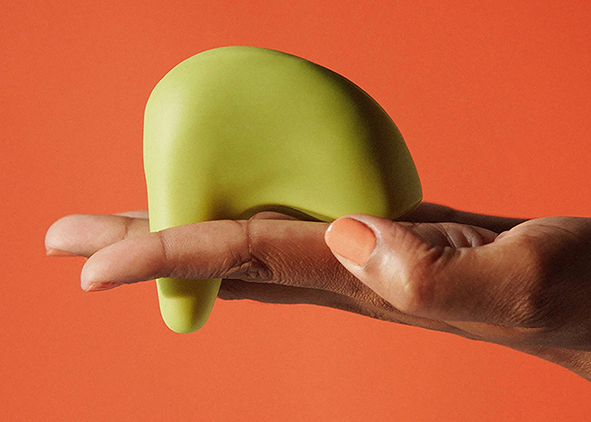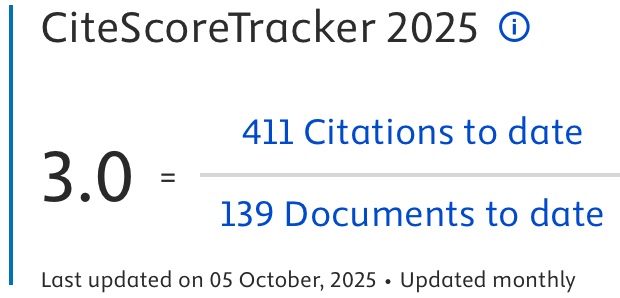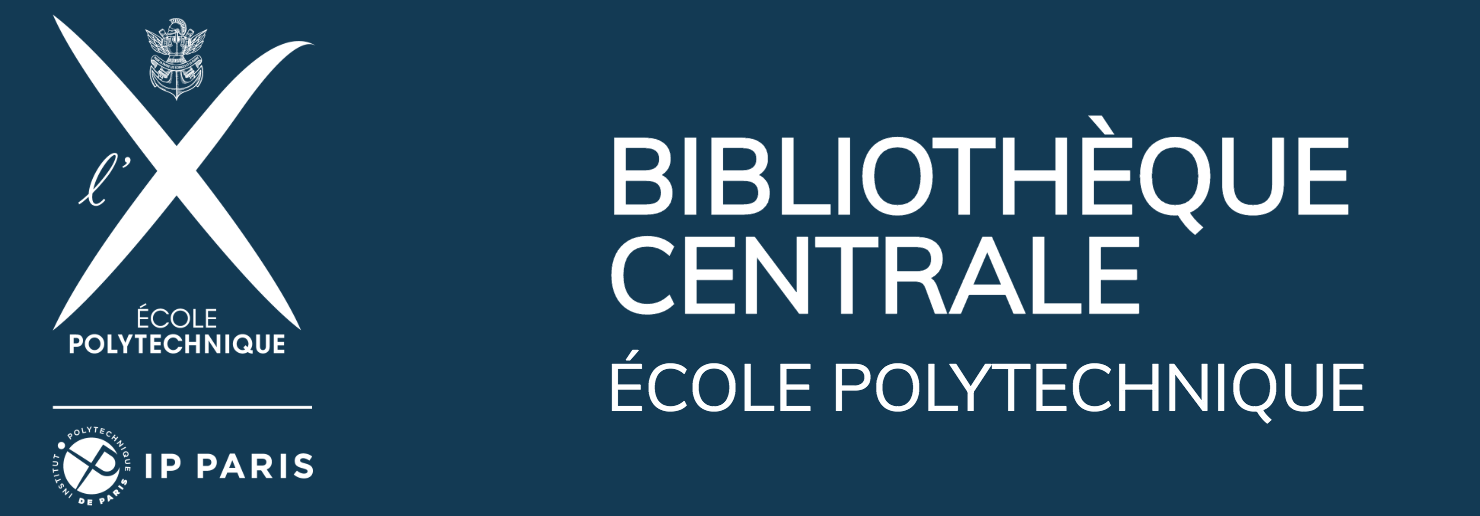Design con e per le donne – Nuove traiettorie per il design medicale
DOI:
https://doi.org/10.69143/2464-9309/17222025Parole chiave:
design incentrato sulle donne, salute e benessere, design di prodotto, uguaglianza di genere, tecnologie per la salute delle donneAbstract
La scarsa attenzione rivolta alle specifiche necessità femminili nei processi di progettazione di prodotti per la salute e il benessere ha portato alla diffusione di soluzioni inefficaci e di stereotipi che trascurano le caratteristiche fisiologiche, biologiche, comportamentali e socio-culturali proprie della popolazione femminile. Attraverso l’analisi critica della letteratura internazionale, il paper riporta una selezione di approcci metodologici che mettono le donne ‘al centro del progetto’. I casi studio selezionati identificano tre possibili traiettorie progettuali guidate da matrici 1) biologiche e fisiologiche, 2) anatomiche e 3) socio-culturali. Da questa analisi, emergono principi di progettazione che indirizzano le strategie per lo sviluppo di tecnologie appropriate e accessibili e, quando integrati all’interno del sistema educativo, possono contribuire a sensibilizzare i designer per scardinare bias e stereotipi.
Info sull'articolo
Ricevuto: 18/03/2025; Revisionato: 15/04/2025; Accettato: 21/04/2025
Downloads
##plugins.generic.articleMetricsGraph.articlePageHeading##
Riferimenti bibliografici
Abdulcadir, J., Sachs Guedj, N. and Yaron, M. (eds) (2022), Female genital mutilation/cutting in children and adolescents – Illustrated guide to diagnose, assess, inform and report, Springer, Cham. [Online] Available at: doi.org/10.1007/978-3-030-81736-7 [Accessed 11 April 2025].
Almeida T., Balaam, M. and Comber, R. (2020), “Woman-Centered Design through Humanity, Activism, and Inclusion”, in ACM | Transactions on Computer-Human Interaction, vol. 27, issue 4, article 27, pp. 1-30. [Online] Available at: doi.org/10.1145/3397176 [Accessed 11 April 2025].
Almeida, T., Søndergaard, M., Homewood, S., Morrissey, K. and Balaam, M. (2018), “Conversation – Woman-Centred Design”, in Storni, C., Leahy, K., McMahon, M., Lloyd, P. and Bohemia, E. (eds), Design as a catalyst for change – Proceedings of DRS 2018 International Conference, Limerick, Ireland, June 25-28, 2018, DRS International Conference Series, Design Research Society, London (UK), pp. 1-8. [Online] Available at: doi.org/10.21606/drs.2018.795 [Accessed 11 April 2025].
Anderson, J. M., Rodney, P., Reimer-Kirkham, S., Browne, A. J., Khan, K. B. and Lynam, M. J. (2009), “Inequities in Health and Healthcare Viewed Through the Ethical Lens of Critical Social Justice – Contextual Knowledge for the Global Priorities Ahead”, in Advances in Nursing Science, vol. 32, issue 4, pp. 282-294. [Online] Available at: doi.org/10.1097/ANS.0b013e3181bd6955 [Accessed 11 April 2025].
Barnhart, K. T., Izquierdo, A., Scott Pretorius, E., Shera, D. M., Shabbout, M. and Shaunik, A. (2006), “Baseline dimensions of the human vagina”, in Human Reproduction, vol. 21, issue 6, pp. 1618-1622. [Online] Available at: doi.org/10.1093/humrep/del022 [Accessed 11 April 2025].
Berecki-Gisolf, J., Rezaei-Darzi, E. and Natora, A. H. (2024), “Gender differences in the incidence, characteristics and hospital admission outcomes of fall-related injuries in older adults in Victoria, Australia, over 5 years from 2018/19 to 2022/23”, in Frontiers in Public Health, vol. 12, article 1426726, pp. 1-12. [Online] Available at: doi.org/10.3389/fpubh.2024.1426726 [Accessed 11 April 2025].
Buffagni, A. (2023), “Designing a Soft-Actuated Smart Garment for Postural Control and Fall Prevention in Elderly Women”, in Spinsante, S., Iadarola, G., Paglialonga, A. and Tramarin, F. (eds), IoT Technologies for HealthCare – 9th EAI International Conference, HealthyIoT 2022, Braga, Portugal, November 16-18, 2022 – Proceedings, Lecture Notes of the Institute for Computer Sciences, Social Informatics and Telecommunications Engineering, vol 456, Springer, Cham, pp. 121-135. [Online] Available at: doi.org/10.1007/978-3-031-28663-6_10 [Accessed 11 April 2025].
Buffagni, A. (2022), Modellare la tecnologia sul corpo che invecchia – La ricerca di un metodo, Mimesis Edizioni, Milano.
Celaschi, F. Casoni, G. and Formia, E. (2024), “La mediazione del Design – L’integrazione tra agenti artificiali autonomi, produzione manifatturiera e servizi | The mediation of Design – The integration between autonomous artificial agents, manufacturing production, and services”, in Agathón | International Journal of Architecture, Art and Design, vol. 16, pp. 334-343. [Online] Available at: doi.org/10.19229/2464-9309/16282024 [Accessed 11 April 2025].
Chang, V. C. and Do, M. T. (2015), “Risk factors for falls among seniors – Implications of gender”, in American Journal of Epidemiology, vol. 181, issue 7, pp. 521-531. [Online] Available at: doi.org/10.1093/aje/kwu268 [Accessed 11 April 2025].
Cleghorn, E. (2021), Unwell Women – A Journey through Medicine and Myth in a Man-Made World, Orion Publishing, London.
Costanza-Chock, S. (2021), “3 – Design Justice, AI, and Escape from the Matrix of Domination”, in Arista, N., Costanza-Chock, S., Ghazavi, V., Kite, S., Klusmeier, C., Lewis, J. E., Pechawis, A., Sawyer, J., Zhexi Zhang, G. and Zhang, S. (eds), Against Reduction – Designing Human Future with Machines, MIT Press, Cambridge, pp. 39-59. [Online] Available at: doi.org/10.7551/mitpress/14157.003.0005 [Accessed 11 April 2025].
Costanza-Chock, S. (2020), Design justice – Community-led practices to build the worlds we need, The MIT Press, Cambridge. [Online] Available at: doi.org/10.7551/mitpress/12255.001.0001 [Accessed 11 April 2025].
Criado Perez, C. (2019), Invisible Women – Exposing Data Bias in a World Designed for Men, Chatto & Windus, London.
Esfahani, B. K. (2020), “Bridging gender and human-centred design – A design verification study”, in Mpofu, K. and Butala, P. (eds), 30th CIRP Conference on Design (CIRP Dn 2020) – Enhancing design through the 4th Industrial Revolution Thinking – Procedia CIRP Volume 91, Pretoria, South Africa, May 5-8, 2020, Elsevier Procedia, Amsterdam, pp. 824-831. [Online] Available at: doi.org/10.1016/j.procir.2020.02.241 [Accessed 11 April 2025].
Frausin, M. and Buffagni, A. (2022), “Design considerations for homecare products – Towards the digital healthcare transition”, in Proceedings of DARCH 2022 November – 3rd International Conference on Architecture & Design, 7-8 November, 2022, International Organization Center of Academic Research, Istanbul. [Online] Available at: doi.org/10.46529/darch.202230 [Accessed 11 April 2025].
Frisby, W., Maguire, P. and Reid, C. (2009), “The ‘f’ word has everything to do with it – How feminist theories inform action research”, in Action Research, vol. 7, issue 1, pp. 13-29. [Online] Available at: doi.org/10.1177/1476750308099595 [Accessed 11 April 2025].
Garattini, S. (2025), Farmaci – Luci e ombre, Il Mulino, Bologna.
Gatenby, B. and Humphries, M. (2000), “Feminist participatory action research – Methodological and ethical issues”, in Women’s Studies International Forum, vol. 23, issue 1, pp. 89-105. [Online] Available at: doi.org/10.1016/S0277-5395(99)00095-3 [Accessed 11 April 2025].
Grimme, S., Spoerl, S. M., Boll, S. and Koelle, M. (2024), “My Data, My Choice, My Insights – Women’s Requirements when Collecting, Interpreting and Sharing their Personal Health Data”, in Floyd Mueller, F., Kyburz, P., Williamson, J. R., Sas, C., Wilson, M. L., Toups Dugas, P. and Shklovski, I. (eds), CHI’24 – Proceedings of the 2024 CHI Conference on Human Factors in Computing Systems, Honolulu, Hawaii, May 11-16, 2024, Association for Computing Machinery, New York, article 688, pp. 1-18. [Online] Available at: doi.org/10.1145/3613904.3642851 [Accessed 11 April 2025].
Guyan, K. (2022), Queer Data – Using Gender, Sex and Sexuality Data for Action, Bloomsbury Publishing, London.
Haraway, D. (1988), “Situated Knowledges – The Science Question in Feminism and the Privilege of Partial Perspective”, in Feminist Studies, vol. 14, issue 3, pp. 575-599. [Online] Available at: doi.org/10.2307/3178066 [Accessed 11 April 2025].
Henriques, A. O., Rafael, S., Almeida, V. M. and Pinto, J. G. (2023), “The problem with gender-blind design and how we might begin to address it – A model for intersectional feminist ethical deliberation”, in Schmidt, A., Väänänen, K., Goyal, T., Kristensson, P. O. and Peters, A. (eds), CHI EA ’23 – Extended Abstracts of the 2023 CHI Conference on Human Factors in Computing Systems, Hamburg, Germany, April 23-28, 2023, Association for Computing Machinery, New York, article 423, pp. 1-12. [Online] Available at: doi.org/10.1145/3544549.3582750 [Accessed 11 April 2025].
Jackson, G. (2019), “The female problem – How male bias in medical trials ruined women’s health”, in The Guardian, newspaper online, 13/11/2019. [Online] Available at: theguardian.com/lifeandstyle/2019/nov/13/the-female-problem-male-bias-in-medical-trials [Accessed 11 April 2025].
Langella, C., Carleo, S. and De Luca, M. (2023), “Modularità come strategia per il design medicale | Modularity as a strategy for medical design”, in Agathón | International Journal of Architecture, Art and Design, vol. 14, pp. 294-303. [Online] Available at: doi.org/10.19229/2464-9309/14252023 [Accessed 11 April 2025].
Le Cunff, A.-L. (n.d.), Personal Science – Self-Experimentation from Quantified Self to Qualified Self. [Online] Available at: nesslabs.com/personal-science [Accessed 11 April 2025].
Merone, L., Tsey, K., Russell, D. and Nagle, C. (2022), “Sex Inequalities in Medical Research – A Systematic Scoping Review of the Literature”, in Women’s Health Reports, vol. 3, issue 1, pp. 49-59. [Online] Available at: doi.org/10.1089/whr.2021.0083 [Accessed 11 April 2025].
Moss, G. (2009), Gender, Design and Marketing – How Gender Drives our Perception of Design and Marketing, Routledge, London.
O’Laughlin, D. J., Strelow, B., Fellows, N., Kelsey, E., Peters, S., Stevens, J. and Tweedy, J. (2021), “Addressing Anxiety and Fear during the Female Pelvic Examination”, in Journal of Primary Care & Community Health, vol. 12. [Online] Available at: doi.org/10.1177/2150132721992195 [Accessed 11 April 2025].
Ovseiko, P. V., Greenhalgh, T., Adam, P., Grant, J., Hinrichs-Krapels, S., Graham, K. E., Valentine, P. A., Sued, O., Boukhris, O. F., Al Olaqi, N. M., Al Rahbi, I. S., Dowd, A.-M., Bice, S., Heiden, T. L., Fischer, M. D., Dopson, S., Norton, R., Pollitt, A., Wooding, S., Balling, G. V., Jakobsen, U., Kuhlmann, E., Klinge, I., Pololi, L. H., Jagsi, R., Lawton Smith, H., Etzkowitz, H., Nielsen, M. W., Carrion, C., Solans-Domènech, M., Vizcaino, E., Naing, L., Cheok, Q. H. N., Eckelmann, B., Simuyemba, M. C., Msiska, T., Declich, G., Edmunds, L. D., Kiparoglou, V., Buchan, A. M. J., Williamson, C., Lord, G. M., Channon, K. M., Surender, R. and Buchan, A. M. (2016), “A global call for action to include gender in research impact assessment”, in Health Research Policy and Systems, vol. 14, issue 1, article 50, pp. 1-12. [Online] Available at: doi.org/10.1186/s12961-016-0126-z [Accessed 11 April 2025].
Place, A. (ed.) (2023), Feminist Designer – On the Personal and the Political in Design, MIT Press, Cambridge.
Porfirione, C., Ferrari Tumay, X. and Leggiero, I (2024), “Conoscenza, innovazione e cambiamento – Il potere dell’errore nel design e nei sistemi complessi | Knowledge, innovation, and change – The power of error in design and complex systems”, in Agathón | International Journal of Architecture, Art and Design, vol. 16, pp. 232-241. [Online] Available at: doi.org/10.19229/2464-9309/16202024 [Accessed 11 April 2025].
Prochner, I. (2023), Designing for sex and gender equity – Design Research for Change, Routledge, New York.
Sanders, E. B.-N. and Stappers, P. J. (2008), “Co-creation and the new landscapes of design”, in Co-Design | International Journal of CoCreation in Design and the Arts, vol. 4, issue 1, pp. 5-18. [Online] Available at: doi.org/10.1080/15710880701875068 [Accessed 11 April 2025].
Søndergaard, M. L. J. and Hansen, L. K. (2017), “Designing with Bias and Privilege?”, in Nordes | Nordic Design Research, vol. 7, issue 1, pp. 1-8. [Online] Available at: archive.nordes.org/index.php/n13/article/view/511 [Accessed 11 April 2025].
Søndergaard, M. L. J., Ciolfi Felice, M. and Balaam, M. (2021), “Designing menstrual technologies with adolescents”, in Kitamura, Y., Quigley, A., Isbister, K., Igarashi, T., Bjørn, P. and Drucker, S. (eds), CHI’21 – Proceedings of the 2021 CHI conference on human factors in computing systems, Yokoama, Japan, May 8-13, 2021, Association for Computing Machinery, New York, pp. 1-14. [Online] Available at: doi.org/10.1145/3411764.3445471 [Accessed 11 April 2025].
Stevens, J. A. and Sogolow, E. D. (2005), “Gender differences for non-fatal unintentional fall related injuries among older adults”, in Injury prevention, vol. 11, issue 2, pp. 115-119. [Online] Available at: doi.org/10.1136/ip.2004.005835 [Accessed 11 April 2025].
Tang, A. (n.d.), “Genderless design is a myth – How to deconstruct the gender binary in design and make space for genderfluidity”, in DOC, newspaper online. [Online] Available at: doc.cc/articles/genderless-design-is-a-myth [Accessed 11 April 2025].
Taylor, G. A., McDonagh, D. and Hansen, M. J. (2017), “Improving the Pelvic Exam Experience – A Human-Centered Design Study”, in The Design Journal | An International Journal for All Aspects of Design, vol. 20, issue sup 1, pp. 2348-2362. [Online] Available at: doi.org/10.1080/14606925.2017.1352750 [Accessed 11 April 2025].
Tripaldi, L. (2023), Gender tech – Come la tecnologia controlla il corpo delle donne, Editori Laterza, Roma.
Wachter-Boettcher, S. (2017), Technically wrong – Sexist apps, biased algorithms, and other threats of toxic tech, WW Norton & Company, New York.
Waters, P. (2021), “Design has a gender problem – What can we do about it? – How design can learn from feminist theory”, in Medium, newspaper online, 15/07/2021. [Online] Available at: medium.com/peter-waters-portfolio/design-has-a-gender-problem-what-can-we-do-about-it-493cfc102311 [Accessed 11 April 2025].
Wells, J. C. K., Cole, T. J. and Treleaven, P. (2008), “Age-variability in body shape associated with excess weight – The UK national sizing survey”, in Obesity | A Research Journal, vol. 16, issue 2, pp. 435-441. [Online] Available at: doi.org/10.1038/oby.2007.62 [Accessed 11 April 2025].
Zaga, C. and Lupetti, M. L. (eds) (2022), Diversity Equity and Inclusion in Embodied AI – Reflecting on and Re-imagining our Future with Embodied AI, 4TU.Federation, Delft. [Online] Available at: doi.org/10.3990/1.9789036553599 [Accessed 11 April 2025].

##submission.downloads##
Pubblicato
Come citare
Fascicolo
Sezione
Categorie
Licenza
Copyright (c) 2025 Francesca Toso

TQuesto lavoro è fornito con la licenza Creative Commons Attribuzione 4.0 Internazionale.
AGATHÓN è pubblicata sotto la licenza Creative Commons Attribution License 4.0 (CC-BY).
License scheme | Legal code
Questa licenza consente a chiunque di:
Condividere: riprodurre, distribuire, comunicare al pubblico, esporre in pubblico, rappresentare, eseguire e recitare questo materiale con qualsiasi mezzo e formato.
Modificare: remixare, trasformare il materiale e basarti su di esso per le tue opere per qualsiasi fine, anche commerciale.
Alle seguenti condizioni
Attribuzione: si deve riconoscere una menzione di paternità adeguata, fornire un link alla licenza e indicare se sono state effettuate delle modifiche; si può fare ciò in qualsiasi maniera ragionevole possibile, ma non con modalità tali da suggerire che il licenziante avalli l'utilizzatore o l'utilizzo del suo materiale.
Divieto di restrizioni aggiuntive: non si possono applicare termini legali o misure tecnologiche che impongano ad altri soggetti dei vincoli giuridici su quanto la licenza consente di fare.
Note
Non si è tenuti a rispettare i termini della licenza per quelle componenti del materiale che siano in pubblico dominio o nei casi in cui il nuovo utilizzo sia consentito da una eccezione o limitazione prevista dalla legge.
Non sono fornite garanzie. La licenza può non conferire tutte le autorizzazioni necessarie per l'utilizzo che ci si prefigge. Ad esempio, diritti di terzi come i diritti all'immagine, alla riservatezza e i diritti morali potrebbero restringere gli usi del materiale.


















































































